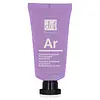What's inside
What's inside
 Key Ingredients
Key Ingredients

 Benefits
Benefits

 Concerns
Concerns

 Ingredients Side-by-side
Ingredients Side-by-side

Water
Skin ConditioningKaolin
AbrasiveGlycerin
HumectantCetearyl Alcohol
EmollientGlyceryl Stearate Se
EmulsifyingCaprylic/Capric Triglyceride
MaskingPrunus Amygdalus Dulcis Oil
Skin ConditioningVitis Vinifera Seed Oil
EmollientButyrospermum Parkii Butter
Skin ConditioningSimmondsia Chinensis Seed Oil
EmollientCrambe Abyssinica Seed Oil
Skin ConditioningSodium Levulinate
Skin ConditioningGlyceryl Caprylate
EmollientSodium Anisate
AntimicrobialLactic Acid
BufferingSodium Stearoyl Glutamate
CleansingXanthan Gum
EmulsifyingPhytic Acid
Levulinic Acid
PerfumingCellulose Gum
Emulsion StabilisingChondrus Crispus Extract
Skin ConditioningCeratonia Siliqua Gum
EmollientSucrose
HumectantCynara Scolymus Leaf Extract
Skin ConditioningGluconolactone
Skin ConditioningSodium Benzoate
MaskingCitric Acid
BufferingCalcium Gluconate
HumectantWater, Kaolin, Glycerin, Cetearyl Alcohol, Glyceryl Stearate Se, Caprylic/Capric Triglyceride, Prunus Amygdalus Dulcis Oil, Vitis Vinifera Seed Oil, Butyrospermum Parkii Butter, Simmondsia Chinensis Seed Oil, Crambe Abyssinica Seed Oil, Sodium Levulinate, Glyceryl Caprylate, Sodium Anisate, Lactic Acid, Sodium Stearoyl Glutamate, Xanthan Gum, Phytic Acid, Levulinic Acid, Cellulose Gum, Chondrus Crispus Extract, Ceratonia Siliqua Gum, Sucrose, Cynara Scolymus Leaf Extract, Gluconolactone, Sodium Benzoate, Citric Acid, Calcium Gluconate
Water
Skin ConditioningOctocrylene
UV AbsorberDibutyl Adipate
EmollientEthylhexyl Salicylate
UV AbsorberButyl Methoxydibenzoylmethane
UV AbsorberMethylene Bis-Benzotriazolyl Tetramethylbutylphenol
UV FilterGlycerin
HumectantDiethylhexyl Butamido Triazone
UV AbsorberPotassium Cetyl Phosphate
EmulsifyingGlyceryl Stearate
EmollientPEG-100 Stearate
Stearyl Alcohol
EmollientBis-Ethylhexyloxyphenol Methoxyphenyl Triazine
Skin ConditioningParaffinum Liquidum
EmollientAlcohol Denat.
AntimicrobialVp/Eicosene Copolymer
Niacinamide
SmoothingBiosaccharide Gum-4
Skin ConditioningMethylsilanol Mannuronate
Skin ConditioningAloe Barbadensis Leaf Extract
EmollientAcetyl Tyrosine
Skin ConditioningRiboflavin
Cosmetic ColorantAchillea Millefolium Extract
CleansingPhenoxyethanol
PreservativeCetyl Alcohol
EmollientSodium Carbomer
Emulsion StabilisingCitric Acid
Buffering1,2-Hexanediol
Skin ConditioningParfum
MaskingDecyl Glucoside
CleansingXanthan Gum
EmulsifyingSodium Methylparaben
PreservativeTetrasodium EDTA
Sorbic Acid
Preservative2-Bromo-2-Nitropropane-1,3-Diol
PreservativePropylene Glycol
HumectantPotassium Sorbate
PreservativeAscorbic Acid
AntioxidantSodium Benzoate
MaskingSodium Sulfite
PreservativeMethylparaben
PreservativeEthylparaben
PreservativeWater, Octocrylene, Dibutyl Adipate, Ethylhexyl Salicylate, Butyl Methoxydibenzoylmethane, Methylene Bis-Benzotriazolyl Tetramethylbutylphenol, Glycerin, Diethylhexyl Butamido Triazone, Potassium Cetyl Phosphate, Glyceryl Stearate, PEG-100 Stearate, Stearyl Alcohol, Bis-Ethylhexyloxyphenol Methoxyphenyl Triazine, Paraffinum Liquidum, Alcohol Denat., Vp/Eicosene Copolymer, Niacinamide, Biosaccharide Gum-4, Methylsilanol Mannuronate, Aloe Barbadensis Leaf Extract, Acetyl Tyrosine, Riboflavin, Achillea Millefolium Extract, Phenoxyethanol, Cetyl Alcohol, Sodium Carbomer, Citric Acid, 1,2-Hexanediol, Parfum, Decyl Glucoside, Xanthan Gum, Sodium Methylparaben, Tetrasodium EDTA, Sorbic Acid, 2-Bromo-2-Nitropropane-1,3-Diol, Propylene Glycol, Potassium Sorbate, Ascorbic Acid, Sodium Benzoate, Sodium Sulfite, Methylparaben, Ethylparaben
Ingredients Explained
These ingredients are found in both products.
Ingredients higher up in an ingredient list are typically present in a larger amount.
Citric Acid is an alpha hydroxy acid (AHA) naturally found in citrus fruits like oranges, lemons, and limes.
Like other AHAs, citric acid can exfoliate skin by breaking down the bonds that hold dead skin cells together. This helps reveal smoother and brighter skin underneath.
However, this exfoliating effect only happens at high concentrations (20%) which can be hard to find in cosmetic products.
Due to this, citric acid is usually included in small amounts as a pH adjuster. This helps keep products slightly more acidic and compatible with skin's natural pH.
In skincare formulas, citric acid can:
While it can provide some skin benefits, research shows lactic acid and glycolic acid are generally more effective and less irritating exfoliants.
Most citric acid used in skincare today is made by fermenting sugars (usually from molasses). This synthetic version is identical to the natural citrus form but easier to stabilize and use in formulations.
Read more about some other popular AHA's here:
Learn more about Citric AcidGlycerin is already naturally found in your skin. It helps moisturize and protect your skin.
A study from 2016 found glycerin to be more effective as a humectant than AHAs and hyaluronic acid.
As a humectant, it helps the skin stay hydrated by pulling moisture to your skin. The low molecular weight of glycerin allows it to pull moisture into the deeper layers of your skin.
Hydrated skin improves your skin barrier; Your skin barrier helps protect against irritants and bacteria.
Glycerin has also been found to have antimicrobial and antiviral properties. Due to these properties, glycerin is often used in wound and burn treatments.
In cosmetics, glycerin is usually derived from plants such as soybean or palm. However, it can also be sourced from animals, such as tallow or animal fat.
This ingredient is organic, colorless, odorless, and non-toxic.
Glycerin is the name for this ingredient in American English. British English uses Glycerol/Glycerine.
Learn more about GlycerinSodium Benzoate is a preservative. It's used in both cosmetic and food products to inhibit the growth of mold and bacteria. It is typically produced synthetically.
Both the US FDA and EU Health Committee have approved the use of sodium benzoate. In the US, levels of 0.1% (of the total product) are allowed.
Sodium benzoate works as a preservative by inhibiting the growth of bacteria inside of cells. It prevents the cell from fermenting a type of sugar using an enzyme called phosphofructokinase.
It is the salt of benzoic acid. Foods containing sodium benzoate include soda, salad dressings, condiments, fruit juices, wines, and snack foods.
Studies for using ascorbic acid and sodium benzoate in cosmetics are lacking, especially in skincare routines with multiple steps.
We always recommend speaking with a professional, such as a dermatologist, if you have any concerns.
Learn more about Sodium BenzoateWater. It's the most common cosmetic ingredient of all. You'll usually see it at the top of ingredient lists, meaning that it makes up the largest part of the product.
So why is it so popular? Water most often acts as a solvent - this means that it helps dissolve other ingredients into the formulation.
You'll also recognize water as that liquid we all need to stay alive. If you see this, drink a glass of water. Stay hydrated!
Learn more about WaterXanthan gum is used as a stabilizer and thickener within cosmetic products. It helps give products a sticky, thick feeling - preventing them from being too runny.
On the technical side of things, xanthan gum is a polysaccharide - a combination consisting of multiple sugar molecules bonded together.
Xanthan gum is a pretty common and great ingredient. It is a natural, non-toxic, non-irritating ingredient that is also commonly used in food products.
Learn more about Xanthan Gum